What is the new European framework about?
The European Intelligent Transport Systems Directive aims to promote the coordinated deployment of intelligent transport systems across Europe. It provides a framework for developing and implementing technologies to improve the efficiency, safety and sustainability of transport systems within the European Union (EU).
On 23 October 2023, the EU Council of Ministers adopted the long-awaited revised Intelligent Transport System (ITS) Directive following approval by the European Parliament. The European Commission started this process in 2021 after a broad consultation period with public and private actors, including Ertico-ITS Europe.
New European legislation should ensure that ITS applications in road transport enable seamless integration with other modes of transport, such as railways or active mobility, thus facilitating the switch to those modes wherever possible, to improve efficiency and accessibility.
Why is this a good fit for Ertico and its partners?
Innovation and intelligent transportation systems are the DNA of Erteco. Our European Public-Private Partnership was established in 1991 at the initiative of 15 industry leaders and the European Commission to bridge the gap between research and dissemination of transport and mobility services. “Connecting the dots” across eight sectors across the ecosystem is our motto.
Intelligent Transportation Systems (ITS) make mobility smarter, safer, more efficient and sustainable. It’s all about ICT, data exchange and synchronization between transport infrastructure, service providers and users of this infrastructure. We’re talking about connected and collaborative mobility between vehicles and roads, sharing data on traffic conditions, road safety, travel, electric vehicle (EV) charging, trip planners, e-calls, automated driving – not just roads but true multimodality.
A smarter, interoperable transport system enables more effective traffic management and mobility, facilitating the combination of more sustainable modes of transport. For example, mobile applications suggest different transportation options to travelers to reach their destination. Transport operators also share their insights with authorities to make better mobility management decisions. This, in turn, will reduce congestion and reduce emissions.
Our activities in the wider community align well with the Intelligent Transport Systems (ITS) framework. Examples:
Interactive traffic management, enhanced traffic management, data sharing and real-time traffic information, including delegated RTTI regulation: TM 2.0
Map data and cooperation between map makers, road authorities and public authorities: TN-ITS
Road Safety Data Exchange Through the exchange of safety-related traffic information between OEMs, service providers, road authorities and others: Data Road Safety (DFRS)
As part of the preparation and dissemination of the European Mobility Data Space, we contribute to European co-funded partnership projects, incl
PrepDSpace4Mobility, and the newly launched project “deployEMDS”. Our dynamic participation in Napcore, the national access point consortium, is another key project contributing to the creation of a one-stop-shop for data availability and sharing.
Ertico also continues its dynamic cooperation with the MaaS Alliance and TISA where ITS directives and delegated acts are an important element
What are the main objectives of this EU initiative?
The main objectives of the European Intelligent Transport Systems Directive include:
Interoperability: Ensure that intelligent transport systems and services are interoperable across different Member States and modes of transport, such as roads, railways, waterways and air. Technological neutrality is a key point here.
Continuity and consistency: Promote a consistent approach to ITS deployment to avoid fragmentation and ensure continuity of services when traveling across borders.
Standardization: Encouraging the use of common standards and protocols to enable seamless communication and collaboration between various components of intelligent transportation systems.
Deploy key services: Identify specific ITS services that should be deployed, such as real-time traffic information, multi-modal data sharing, e-calls, reservation and ticketing, etc.
Data protection and privacy: Addressing issues related to data protection and privacy when collecting and processing data through intelligent transportation systems.
Openness and competition: Promoting open and competitive markets for ITS services and solutions.
The ultimate goal is to improve mobility efficiency while reducing congestion and environmental impacts. At the same time, the legislation promotes innovation in the sector by encouraging the development and diffusion of advanced technologies.
Are there any changes compared to the initial 2010 guidance?
The adopted text has a major push, and is called a revision of the Directive of 7 July 2010. There is a growing need to provide more data and mandate better use of data in making transport chains more sustainable, safer, efficient and resilient. Such matters would best be coordinated at the EU level, alongside other initiatives aimed at coordinating and facilitating data exchange in the mobility, transport and logistics sectors through a multimodal perspective, such as the Common European Mobility Data Space.
Based on surveys and studies, the European Commission concluded that in several Member States, national applications of intelligent transport systems and services in the road transport sector have already been deployed. However, despite improvements since its adoption in 2010, an evaluation of the ITS Directive has found persistent shortcomings, resulting in the continued fragmented and uncoordinated deployment and lack of geographical continuity of ITS services throughout the Union and on its external borders.
Also, although National Access Points (NAPs) are operational in all Member States, there is still a need to improve the availability of data relating to many types of data that are crucial to support the development of essential services that provide the necessary information to end users. .
The new text takes some components from the C-ITS framework proposed (but not adopted) in the past. C-ITS uses technologies that enable road vehicles to communicate with each other and with roadside infrastructure including traffic signals and introduces a common European trust model for C-ITS to establish a trust relationship between all C-ITS stations, regardless of the communication technologies used. .
The text calls on the Commission to find solutions to the situation of electronic call blocking when legacy 2G/3G networks are shut down and replaced by 5G and beyond (packet switching). There is no backward compatibility between these technologies, so solutions must be found for older fleets, public emergency centers equipped with 2G/3G networks, and new vehicles that need to be type-certified with permanent technical systems.
The revised framework is a stepping stone towards the creation of a common European mobility data space (the Commission is expected to issue a communication on this in November), a transformative development for the wider mobility landscape. It expands the scope of the previous rules and covers emerging solutions and services including multimodal information, reservation and ticketing services, applications that facilitate trip booking, combining public transport with car and bike sharing services, as well as vehicle-to-infrastructure (V2I/V2X) connectivity and mobility. Automated.
The need to digitize critical information, including speed limits, road works and multimodal access nodes, coupled with the provision of essential service delivery, including road safety information, should lead to wider coverage of real-time data and more accurate intelligent systems to help Speed transport users.
The Directive specifies basic types of data, including access conditions for tunnels and bridges, speed limits, traffic plans, permanent access restrictions, road closures, road works, temporary traffic management measures, and vital services such as traffic information services related to road safety. , to be available throughout the Union, as set out in the annexes.
What is the relationship between the European call for more sustainable finance and smart trade systems?
The EU Green Deal includes the so-called Taxonomy Regulation 2020. This financial legislation aims to facilitate and stimulate sustainable investments. It introduces “technological screening criteria” for determining what constitutes environmentally sustainable economic activity. While we are confident that ITS contribute to greening the economy, the European Framework does not recognize ITS as a screening criterion.
Ertico, together with CEDR (European Road Managers), Acecap (Association of Toll Road Infrastructures), IRF (International Road Federation) and the DSRC interest group have shared their concerns with the Commission. We are still very vocal about this topic: “In our view, disaggregation, in its current state, creates silos based on individual economic activities, while transport policy requires balancing modes of transport into more holistic mobility concepts.”
Recital 49 of the Classification and Recital 3 of the revised ITS Directive clearly pave the way for the Commission’s initiative and recognition of ITS as a tool for safe, smart and sustainable transport and mobility services. Since the classification is related to public procurement (Recital 43) and since ITS activities mostly address activities procured and financed through public funding, we find this to be a serious threat to the activities of the entire ITS sector. The damage to the sector also results from the fact that investors are (and in fact should not) direct funding to activities that do not contribute significantly to the environmental targets of the EU taxonomy.
What are the next steps?
The new Directive retains the framework character of the initial Directive, including various technical interventions by way of implementation and delegation. It contains an implementation program covering at least the next five years, and a precise geographical scope of the road network for which reusable data must be available as a basic requirement. Through delegated procedures, the Committee may complete certain aspects of this implementation program as it did with the 2010 version of this Framework Directive.
Ertico looks forward to publishing the text in the coming weeks and will help the European Commission and Member States implement the rules into national law over the next two years. We are also in good dialogue with our colleagues from national ITS organizations that provide ITS with their members in their territories. 1+1=3 through good cooperation and information exchange.
This article was first published on erticonetwork.com
About the author:
Jost Phantom is CEO of Ertico – ITS Europe





